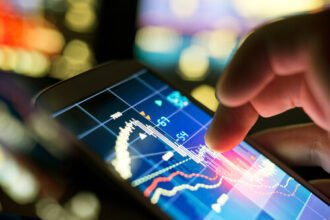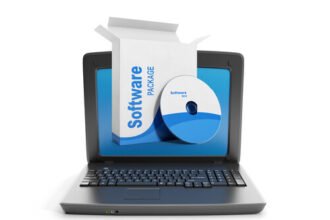 Machine learning is about creating algorithms and systems that can learn from the data they process and analyse. The more data is processed, the better the algorithm will become. It is actually a science of getting computers to act without explicitly being programmed and is a branch of Artificial Intelligence (AI).
Machine learning is about creating algorithms and systems that can learn from the data they process and analyse. The more data is processed, the better the algorithm will become. It is actually a science of getting computers to act without explicitly being programmed and is a branch of Artificial Intelligence (AI).
 Machine learning is about creating algorithms and systems that can learn from the data they process and analyse. The more data is processed, the better the algorithm will become. It is actually a science of getting computers to act without explicitly being programmed and is a branch of Artificial Intelligence (AI). AI is a scientific discipline to find patterns, extrapolate answers and make predictions using algorithms and computational techniques. Nowadays, Machine learning can be found in many applications, ranging from self-driving cars, to effective web search, facial recognition and speech recognition, so what could machine learning mean for your business?
Machine learning is about creating algorithms and systems that can learn from the data they process and analyse. The more data is processed, the better the algorithm will become. It is actually a science of getting computers to act without explicitly being programmed and is a branch of Artificial Intelligence (AI). AI is a scientific discipline to find patterns, extrapolate answers and make predictions using algorithms and computational techniques. Nowadays, Machine learning can be found in many applications, ranging from self-driving cars, to effective web search, facial recognition and speech recognition, so what could machine learning mean for your business?
Machines learning can be a very powerful for your business, but for it to work it requires access to all available datasets. For Machine learning more data does mean better results, because new data will enable the computer program to teach and improve itself. It is a popular research topic as the potential of Machine learning is enormous. It could allow computers to become fundamentally different and more powerful than we are used to today, resulting in fascinating new applications.
There is a link with data mining as both big data techniques sift through data to look for patterns. The major difference is that data mining finds patterns for humans to understand and use and machine learning uses those patterns to improve its own program and understanding. A concrete example is that of your Facebook newsfeed, which offers better-targeted ads when you like something or write something on your wall.
There are four different Machine-learning areas, each with its own applications. There is supervised learning, where an algorithm is for example taught what a face is and what not and eventually will learn itself whether a new image contains a face or not. For this it is required that examples used must be labelled. In this case, upfront it must be said explicitly which ones are faces and which not. The algorithm is thus first trained on a large set of labelled data and then is let loose on other, unstructured, unlabelled, data.
Unsupervised learning uses data that is not labelled, meaning the algorithm will have to figure out itself what’s being shown. It will do this by clustering data that show the same patterns and thus it tries to find hidden structures in unlabelled data. A fascinating example is that of Google who connected 1.000 computers and let an algorithm analyse 10 million YouTube videos to identify cat faces, without telling upfront to look for cat faces. In order to achieve this, the computers had to figure out what parts of the YouTube stills would be relevant based only on patterns in the data.
Two other areas of Machine learning are reinforcement learning, which is based on trial-and-error search and a delayed reward. This means that it is not told what actions to take, but the algorithm will have to discover itself which actions yield the most rewards by trying them. The other is deep learning, which is dubbed on of the hottest trends in big data currently. It means teaching computers to think more hierarchically or more contextually and it typically uses artificial neural networks. It is capable of breaking down different characteristic constituents in the data and uses those characteristics to learn itself different combinations of those characteristics to know what it sees (a face for example) or what to do (walk for example with robots).
There are quite some examples available of well-known applications of Machine learning and they appear more often every day. Perhaps the most well known is that of the self-driving car by Google. But also the speech recognition by Apple’s Siri or Facebook’s controversial facial recognition technology are great examples of the power of machine learning.
All of these tools have in common that they improve over time the more data is added and is being used by the algorithms. Self-driving cars learn from the effect of a decision made and use the new information to improve itself. It learns from its environment and is capable to learn implicit rules of behaviour. Speech recognition software on the other hand learns from detecting patterns (words) out of vibration in the air in combination with natural language processing to understand the meaning of those words. Facial recognition finally works by finding patterns in images that match those of faces in order to detect faces. It consequently matches those recognized faces with faces in the database to put a name on it. Although this could be very useful, it is also highly controversial as it directly impacts the privacy of consumers.
So, how could your business use Machine learning? Well there are several possibilities. First of all, Machine learning can help you optimize your Search Engine Optimization (SEO). For those organisations that offer websites with continuously changing content, Machine learning can be used to effectively monitor search engine algorithms’ actions in order to understand the impact of changing content. Secondly, Machine-learning algorithms are often used in recommendation engines. They help to improve the recommending of the right products to the right customer at the right moment. It is also used in the medical industry where health organisations use machine learning to help identify the symptoms a patient has in order to help the doctor correctly diagnose a patient and provide the correct medicines.
Some surprising applications of Machine learning are for example that of the Cornell University and Marinexplore who try to identify whales based on audio recordings. This should prevent collisions with ships. Benchmark Solutions uses Machine learning to try to predict trade prices of US corporate bonds. Or what about Amazon who is trying to build a Machine-learning model to predict an employee’s access needs in their offices based on his/her role. Doing this correctly will help prevent new employees receive inadequate permissions, thereby saving Amazon a lot of time, paperwork and money.
The possibilities for machine learning are vast and over time it will result in smarter technology that has the accuracy of a computer and the adaptability of the most intelligent human beings. Self-driving cars, speech recognition and facial recognition are just the beginning of Machine learning. It will results in great new applications that are currently hard to imagine.









